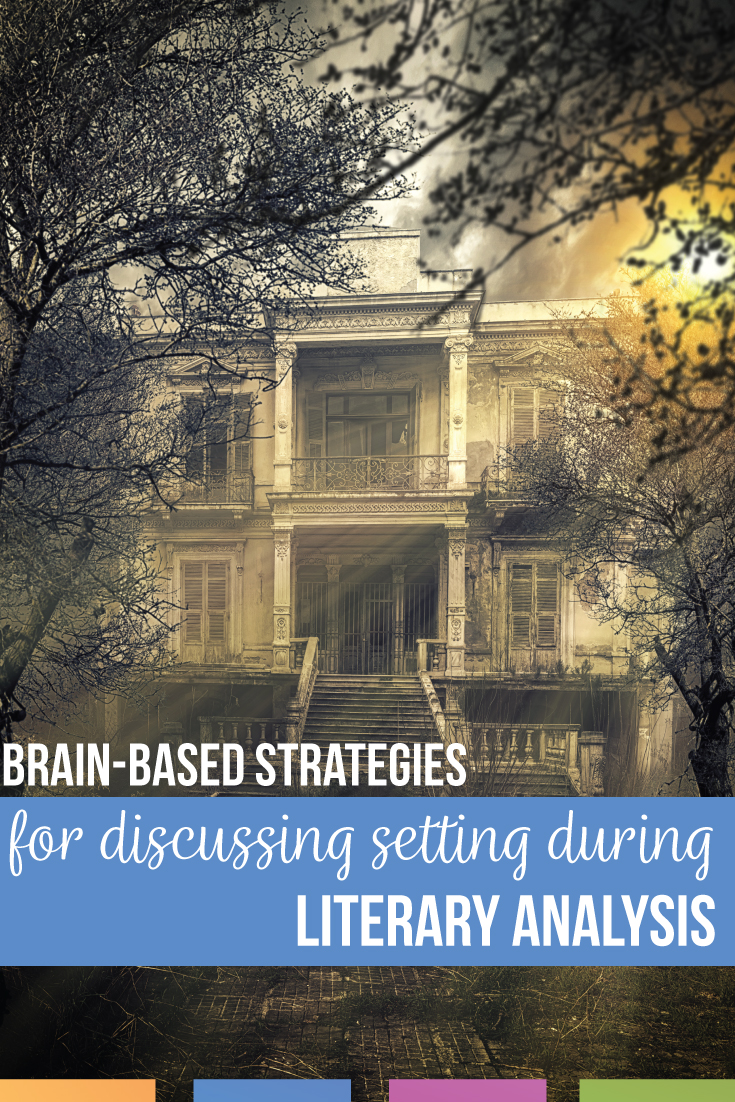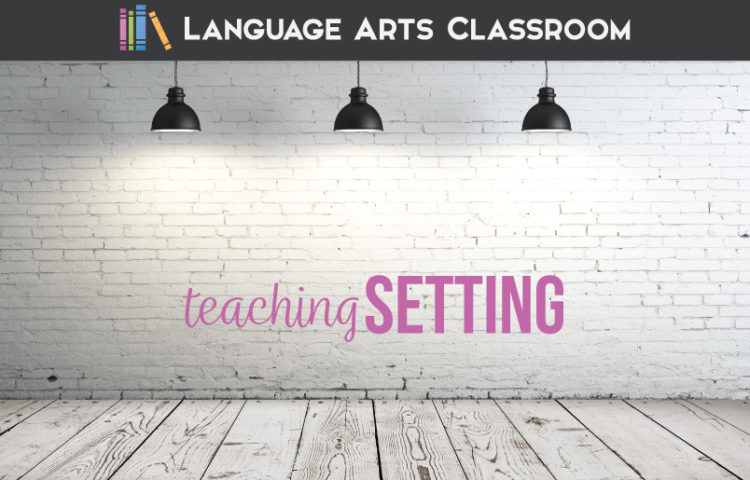Looking for setting activities, a way to discuss or study the setting of a story during literary analysis?
The setting of a novel or short story is important, but sometimes students mistakenly ignore the setting if it doesn’t grab them. For instance, dystopian novels force students to consider the setting; the setting requires acknowledgement because it’s invented. The setting probably receives extended descriptions. When students write a literary analysis essay, they naturally analyze the setting.
All settings matter though. For students to understand characters, they must understand the time periods in which they lived. Sometimes settings serve as more of a motif or symbol (Gatsby, I’m referencing you), and other times the setting is subtle, yet reveals motivation and beliefs (The Glass Menagerie). When we teachers can move students to greater understanding of a story’s setting, we can improve their literary analysis.
Free setting activities
For those reasons, I’ve compiled a list of free, no (or little!) prep setting activities. (You can also download this list for free by clicking on the picture below.) I’ve worked to build brain-based learning strategies into these activities for extra meaning. Some may fit better with novels and others better with short stories. Adapt as needed!
Describe the setting from a different point of view.
For instance, if the story’s point of view is third person, ask students to describe a setting from a character’s first person point of view. What would that character mention? Does the character enjoy his house? Dislike laws or societal expectations during the time period? This discussion often leads to an analysis of restrictions and impositions put on a character from the setting.
Teaching the setting of a story can include a bit of creativity.
Study other literary devices regarding the setting.
A common standard for older students asks for readers to explain how different pieces affect each other. How does the setting influence the theme? characters? Is a particular setting symbolic? Be sure to note the colors used in a setting. Working on the setting can bring in other novel study activities.
You can continue with higher order questioning. Prompt students to evaluate and judge how the author used the setting to explain a conflict and if the author did so effectively.
Design or plan a movie set for the story’s setting.
Capitalize on students’ strengths for this activity. Students can outline what different scenes would look like, others can research what different areas of a house or a town would look like, and others can research the weather/ climate/ vegetation. (If it’s set in the future, what will the weather be? Why?) You can ask students to adhere strictly to the story or to take liberties with changes. They should explain their choices.
Write a welcome brochure or design a town’s website for the main setting.
Students who enjoy design will create beautiful designs for the setting’s advertisements. What would the town’s chamber of commerce show off about the town? If someone was buying a house in the story, what would the real estate agent highlight?
I’ve especially had fun brochures when the story is a mystery. Students highlight the ridiculous and spooky parts of the setting. If you want to cover other devices, a brochure and a website can make great novel study activities.
Divide settings among students.
Write out the most common settings and assign one setting to each group. Give each group a poster or a slide (on Google Slides) and ask them to draw and describe one setting from the story. Piece the posters together for a visual. If you use a digital format, assemble the pieces and share with all students. (You can also complete similar novel study activities concerning other literary devices.)

Find quotes that describe the setting.
Students might skip over the author’s direct descriptions. Part of literary analysis is rereading and searching deeper meaning. Direct descriptions of the setting are a bit like direct characterization—direct setting quotes from the story. Note what is specifically stated about the setting. Now that students have finished the story, do these exact descriptions reveal anything? Sometimes authors provide a key piece of information that isn’t important until later in the story.
Find quotes that indirectly describe the setting.
This is like indirect characterization; find ways that the author reveals the setting, either through objects, characters’ dialogue, characters’ dress, or events. Do these indirect statements align with the direct statements about setting?
Research a specific part of a setting.
What was a typical breakfast for people living during that time period? popular music? Examine what people the ages of your students would be doing. Would they be done with school? married? wearing corsets? at war?
When I teach A Raisin in the Sun, we research life insurance and housing discrimination from the time period. Different approaches with the setting attract different students to the story.
Compile important local or national events from the setting.
Students may grasp the setting better if they understand the historical context. Identify who was president, if a war was happening, and what laws people considered normal. This works well for both the national and local level of stories. Teaching the setting of a story can be a cross-curricular endeavor.
Recall or reread a children’s story that has a similar setting.
Brain-based learning tells teachers to capitalize on prior knowledge:
Plan activities where students can relate what they know from past experiences to their current learning and tie it to the larger concept.
Think of books or stories students already know. When I teach a story set in the 1870s, it helps to mention the Little Women because many students are familiar with that story. Students have a starting point for understanding the setting. You can search for the setting of stories and use that as prior knowledge to build.
You can also use picture books or basic chapter books that generally mention a similar setting. For instance many Magic Treehouse books cover historical events and setting. Students remember those books, and a quick mention will encourage student understanding.
Plus, a review of literature that students love can lead to an impromptu literary devices activity. Teaching setting of a story can spur other discussions.

Setting activities come in a variety of forms, and sometimes students need orchestrated lessons to fully grasp the story’s time period, location, and on. For when you need a quick activity to study a novel or short story’s setting, I hope this list inspires something for your students.
Looking for more? This entire set of graphic organizers helps students organize their ideas about the setting of a story and helps your teaching setting of a story.
Short stories to teach setting
Those are the activities. . . what about short stories to teach setting? I love several, and of course you can teach setting with any short story. However, here are some short stories to teach several.
There Will Come Soft Rains
Any dystopian or science-fiction story will require a close look at the setting. Bradbury’s “There Will Come Soft Rains” is exactly that type of story.
Moments Earlier
“Moments Earlier” might be best for high school students. The setting changes and flashes back and forth, providing plenty of discussion for teaching the setting.
Wine on the Desert
This short story depends on the setting to make sense. Every part of the main conflict centers on the dessert, making “Wine on the Desert” a perfect one of many short stories to teach setting.
New Directions
“New Directions” is a biographical narrative by Maya Angelou. You’ll be able to teach historical aspects of the setting.
Click Clack the Rattle Bag
The setting is not emphasized in “Click Clack the Rattle Bag” which allows the readers to create it themselves. You can complete some interesting setting activities with it.
I hope these short stories to teach setting as well as the setting activities add positively to your ELA curriculum! Download the free PDF of literature activities here:


